Effect of Thermal Exposure on Residual Properties of Wet Layup Carbon Fiber Reinforced Epoxy Composites
Abstract
:1. Introduction
2. Experimental Program
2.1. Material System
2.2. Test Procedures
3. Results and Discussion
3.1. Mechanical Characterization
3.1.1. Uniaxial Tension
3.1.2. Off-Axis Shear
3.1.3. Flexure
3.1.4. Short Beam Shear
3.2. Thermal Analysis
4. Discussion and Conclusions
Author Contributions
Funding
Institutional Review Board Statement
Informed Consent Statement
Data Availability Statement
Acknowledgments
Conflicts of Interest
References
- Abanilla, M.A.; Li, Y.; Karbhari, V.M. Durability characterization of wet layup graphite/epoxy composites used in external strengthening. Compos. Part B Eng. 2006, 37, 200–212. [Google Scholar] [CrossRef]
- Feih, S.; Mouritz, A.P. Tensile properties of carbon fibers and carbon fibre-polymer composites in fire. Compos. Part A Appl. Sci. Manuf. 2012, 43, 765–772. [Google Scholar] [CrossRef] [Green Version]
- Yin, Y.; Binner, J.G.P.; Cross, T.E.; Marshall, S.J. The oxidation behavior of carbon fibers. J. Mater. Sci. 1994, 29, 2250–2254. [Google Scholar] [CrossRef]
- Karbhari, V.M.; Chin, J.W.; Hunston, D.; Benmokrane, B.; Juska, T.; Morgan, R.; Lesko, J.J.; Sorathia, U.; Reynaud, D. Durability gap analysis for fiber-reinforced polymer composites in civil infrastructure. ASCE J. Compos. Constr. 2003, 7, 238–247. [Google Scholar] [CrossRef] [Green Version]
- Mouritz, A.P.; Gibson, A.G. Fire Properties of Polymer Composite Materials; Springer: Dodrecht, The Netherlands, 2006. [Google Scholar]
- Asaro, R.J.; Krysl, P.; Zhu, B.; Ramroth, W.T. Rate dependent constitutive modeling of laminated FRP composites degraded by fire. Compos. Struct. 2005, 68, 399–408. [Google Scholar] [CrossRef] [Green Version]
- Colin, X.; Verdu, J. Strategy for studying thermal oxidation of organic matrix composites. Compos. Sci. Technol. 2005, 65, 411–419. [Google Scholar] [CrossRef]
- Bowles, K.J.; Jayne, D.; Leonhardt, T.A.; Bors, D.J. Thermal Stability Relationships between PMR-15 Resin and its Composites; NASA TM 106285; NASA: Washington, DC, USA, 1993. [Google Scholar]
- Meador, M.A.B.; Lowell, C.E.; Cavano, P.J.; Herrara-Fierro, P. On the oxidative degradation of end capped polyimides: I. Effect of thermocycling on weight loss and crack formation. High Perform. Polym. 1996, 8, 363–379. [Google Scholar] [CrossRef]
- Tandon, G.P.; Pochiraju, K.V.; Schoeppner, G.A. Modeling of oxidative development in PMR-15 resin. Polym. Degrad. Stab. 2006, 91, 1861–1869. [Google Scholar] [CrossRef]
- Reifsnider, K.L.; Case, S. Mechanics of temperature driven long term environmental degradation of polymer-based composite systems. In Proceedings of the ASME Symposium on Durability and Damage Tolerance, San Francisco, CA, USA, 12–17 November 1995. [Google Scholar]
- Zhuang, H.; Wightman, J.P. The influence of surface properties on carbon fiber/epoxy matrix interfacial adhesion. J. Adhes. 1996, 62, 213–245. [Google Scholar] [CrossRef]
- Wimolkiatisak, A.S.; Bell, J.P. Interfacial shear strength and failure modes of interphase modified graphite-epoxy composites. Polym. Compos. 1989, 10, 162–172. [Google Scholar] [CrossRef]
- Mouritz, A.P.; Feih, S.; Kandare, E.; Mathys, Z.; Gibson, A.G.; Des Jardin, P.E.; Case, S.W.; Lattimer, B.Y. Review of fire structural modeling of polymer composites. Compos. Part A Appl. Sci. Manuf. 2009, 40, 1800–1814. [Google Scholar] [CrossRef]
- Tran, P.; Nguyen, Q.T.; Lau, K.T. Fire performance of polymer-based composites for maritime infrastructure. Compos. Part B Eng. 2018, 155, 31–48. [Google Scholar] [CrossRef]
- Firmo, J.P.; Correia, J.R.; Bisby, L.A. Fire behavior of FRP-strengthened reinforced concrete structural elements: A state-of-the-art review. Compos. Part B Eng. 2015, 80, 198–216. [Google Scholar] [CrossRef]
- Singh, S.B.; Sethi, A. A review of performance of fibre reinforced polymer strengthened structures under fire exposure. Proc. Indian Natl. Sci. Acad. 2017, 83, 521–532. [Google Scholar]
- Bazli, M.; Abolfazli, M. Mechanical properties of fibre reinforced polymers under elevated temperatures: An overview. Polymers 2020, 12, 2600. [Google Scholar] [CrossRef]
- Karbhari, V.M.; Xian, G.; Hong, S.K. Effect of thermal exposure on carbon fiber reinforced composites used in civil infrastructure rehabilitation. Compos. Part A Appl. Sci. Manuf. 2021, 149, 106570. [Google Scholar] [CrossRef]
- Maraveas, C.; Miamis, K.; Vrkas, A.A. Fiber-reinforced polymer strengthened/reinforced concrete structures exposed to fire: A review. Struct. Eng. Int. 2012, 22, 500–513. [Google Scholar] [CrossRef]
- Gardiner, C.P.; Mathys, Z.; Mouritz, A.P. Tensile and compressive properties of FRP composites with localized fire damage. Appl. Comp. Mater. 2002, 9, 353–367. [Google Scholar] [CrossRef]
- Vieira, P.S.C.; de Souza, F.S.; Cardoso, D.C.T.; Vieira, J.D.; de Andrade Silva, F. Influence of moderate high temperatures on the residual flexural behavior of pultruded GFRP. Compos. Part B Eng. 2020, 200, 108335. [Google Scholar] [CrossRef]
- Lu, M.G.; Shim, M.J.; Kim, S.W. Thermal degradation of LC epoxy thermosets. J. Appl. Polym. Sci. 2000, 75, 1514–1521. [Google Scholar] [CrossRef]
- Remiro, P.M.; Cortazar, M.; Calahorra, E.; Calafel, M.M. The effect of crosslinking and miscibility on the thermal degradation of an uncured and an amine-cured epoxy resin blended with poly(epsilon-caprolactone). Polym. Degrad. Stab. 2002, 78, 83–93. [Google Scholar] [CrossRef]
- Burton, B.L. The thermo-oxidative stability of cured epoxy resins 1. J. Appl. Polym. Sci. 1993, 47, 1821–1837. [Google Scholar] [CrossRef]
- Grassie, N.; Guy, M.I.; Tennent, N.H. Degradation of epoxy polymers 4. Thermal degradation of bisphenol-A diglycidyl ether cured with ethylene diamine. Polym. Degrad. Stab. 1986, 14, 125–137. [Google Scholar] [CrossRef]
- Levchik, S.V.; Weil, E.D. Thermal decomposition, combustion and flame-retardancy of epoxy resins—A review of the recent literature. Polym. Int. 2004, 53, 1901–1929. [Google Scholar] [CrossRef]
- Scudamore, M.J. Fire performance studies on glass reinforced plastic laminates. Fire Mater. 1994, 18, 313–325. [Google Scholar] [CrossRef]
- Gibson, A.G.; Hume, J. Fire performance of composite panels for large marine structures. Plast. Rubber Compos. Process. Appl. 1995, 23, 175–183. [Google Scholar]
- Dao, M.; Asaro, R.J. A study on failure prediction and design criteria for fiber composites under fire degradation. Compos. Part A Appl. Sci. Manuf. 1999, 30, 123–131. [Google Scholar] [CrossRef]
- Sorathia, U.; Lyon, R.; Gann, R.; Gritzo, L. Materials and fire threat. SAMPE J. 1996, 32, 8–15. [Google Scholar]
- Sorathia, U.; Beck, C.; Dapp, T. Residual strength of composites during and after fire exposure. J. Fire Sci. 1993, 11, 255–270. [Google Scholar] [CrossRef]
- Sorathia, U.; Rollhauser, C.M.; Hughes, W.A. Improved fire safety of composites for naval applications. Fire Mater. 1992, 16, 119–125. [Google Scholar] [CrossRef]
- Mouritz, A.P.; Mathys, Z. Postfire mechanical properties of matrix polymer composites. Compos. Struct. 1999, 46, 643–655. [Google Scholar] [CrossRef]
- Mouritz, A.P.; Mathyz, Z. Postfire mechanical properties of glass reinforced polyester composites. Compos. Sci. Technol. 2001, 61, 475–490. [Google Scholar] [CrossRef]
- Nguyen, P.L.; Vu, X.H.; Ferrier, E. Characterization of pultruded carbon fibre reinforced polymer (P-CFRP) under two elevated temperatures—Mechanical load cases: Residual and thermo-mechanical regimes. Constr. Build. Mater. 2018, 165, 395–412. [Google Scholar] [CrossRef]
- Nguyen, P.L.; Vu, X.H.; Ferrier, E. Elevated temperature behavior of carbon fibre reinforced polymer applied by hand layup (M-CFRP) under simultaneous thermal and mechanical loadings: Experimental and analytical investigation. Fire Saf. J. 2018, 100, 103–117. [Google Scholar] [CrossRef]
- Nguyen, P.L.; Vu, X.H.; Ferrier, E. Thermo-mechanical performance of carbon fiber reinforced polymer (CFRP) with and without fire protection material under combined elevated and mechanical loading conditions. Compos. Part B Eng. 2019, 169, 164–173. [Google Scholar] [CrossRef]
- Schmidt, D.G.; d’Almeida, J.R.M. Effect of temperature exposure on the flexural mechanical behavior of two pultruded composites. Fire Technol. 2018, 6, 1565–1583. [Google Scholar] [CrossRef]
- Ellis, D.S.; Tahatabai, H.; Nabizadeh, A. Residual tensile strength and bond properties of GFRP bars after exposure to elevated temperatures. Materials 2018, 11, 346. [Google Scholar] [CrossRef] [Green Version]
- Ashrafi, H.; Bazli, M.; Jafari, A.; Ozbakkaloglu, T. Tensile properties of GFRP laminates after exposure to elevated temperatures: Effect of fiber configuration, sample thickness, and time of exposure. Compos. Struct. 2020, 238, 111971. [Google Scholar] [CrossRef]
- Zavatta, N.; Rondina, F.; Falaschett, M.P.; Donati, L. Effect of thermal ageing on the mechanical strength of carbon fibre reinforced epoxy composites. Polymers 2021, 13, 2006. [Google Scholar] [CrossRef]
- Hawileh, R.A.; Naser, M.; Zaidan, W.; Rasheed, H. Modeling of insulated CFRP-strengthened reinforced concrete T-beam exposed to fire. Eng. Struct. 2009, 31, 3072–3079. [Google Scholar] [CrossRef]
- Hawileh, R.A.; Abu-Obeidah, A.; Abdalla, J.A.; Al-Tamimi, A. Temperature effect on the mechanical properties of carbon, glass, and catbon-glass FRP laminates. Constr. Build. Mater. 2015, 75, 342–348. [Google Scholar] [CrossRef]
- Merrall, G.T.; Meeks, A.C. Effect of thermal aging on mechanical properties of an epoxy resin system. J. Appl. Polym. Sci. 1972, 16, 3389–3392. [Google Scholar] [CrossRef]
- Foster, S.K.; Bisby, L.A. High temperature residual properties of externally bonded FRP systems. In Proceedings of the 7th International Symposium on Fiber Reinforced Polymer Reinforcement for Reinforced Concrete Structures (FRPRCS-7) ACI SP230-70; American Concrete Institute: Farmington Hills, MI, USA, 2005; pp. 1235–1252. [Google Scholar]
- Cao, S.; Wu, Z.; Li, F. Effects of temperature on tensile strength of carbon fiber and carbon/epoxy composite sheets. Adv. Mater. Res. 2012, 476–478, 778–784. [Google Scholar] [CrossRef]
- Garcia-Moreno, I.G.; Caminero, M.A.; Rodriguez, G.P.; Lopez-Cela, J.J. Effect of thermal ageing on the impact and flexural damage behaviour of carbon fibre reinforced epoxy laminates. Polymers 2019, 11, 80. [Google Scholar] [CrossRef] [PubMed] [Green Version]
- Chamis, C.C. Failure Criteria for Filamentary Composites, Composite Materials, in STP 460; Composite Materials: Testing and Design; ASTM: New Orleans, LO, USA, 1972; Volume 336. [Google Scholar]
- Pindera, M.-J.; Herakovich, C.T. Shear characterization of unidirectional composites with the off-axis tension test. Exp. Mech. 1986, 26, 103–112. [Google Scholar] [CrossRef]
- Akay, M.; Spratt, G.R.; Meenan, B. The effects of long-term exposure to higher temperatures on the ILSS and impact performamce of carbon fibre reinforced bismaleimide. Compos. Sci. Technol. 2003, 63, 1053–1059. [Google Scholar] [CrossRef]
- O’Neal, H.R.; Welch, S.; Rogers, J.; Guilford, S.; Curran, G.; Menard, K.P. Comparison of Tg values for a graphite epoxy composite by differential scanning calorimetry (DSC), thermomechanical analysis (TMA), and dynamic mechanical analysis (DMA). J. Adv. Mater. 1995, 26, 49–54. [Google Scholar]
- Cassel, R.B.; Twombly, B. Glass transition determination by thermomechanical analysis, dynamic mechanical analysis, and differential scanning calorimetry. In Material Characterization by Thermomechanical Analysis; Neag, M., Riga, A., Eds.; American Society for Testing and Materials: West Conshohocken, PA, USA, 1991; p. 108. [Google Scholar]
- Baghad, A.; El Mabrouk, K.; Vaudreuil, S.; Nouneh, K. Eggects of high operating temperatures and holding times on thermomechanical and mechanical properties of autocalved epoxy/carbon composite laminates. Polym. Compos. 2022, 43, 862–873. [Google Scholar] [CrossRef]

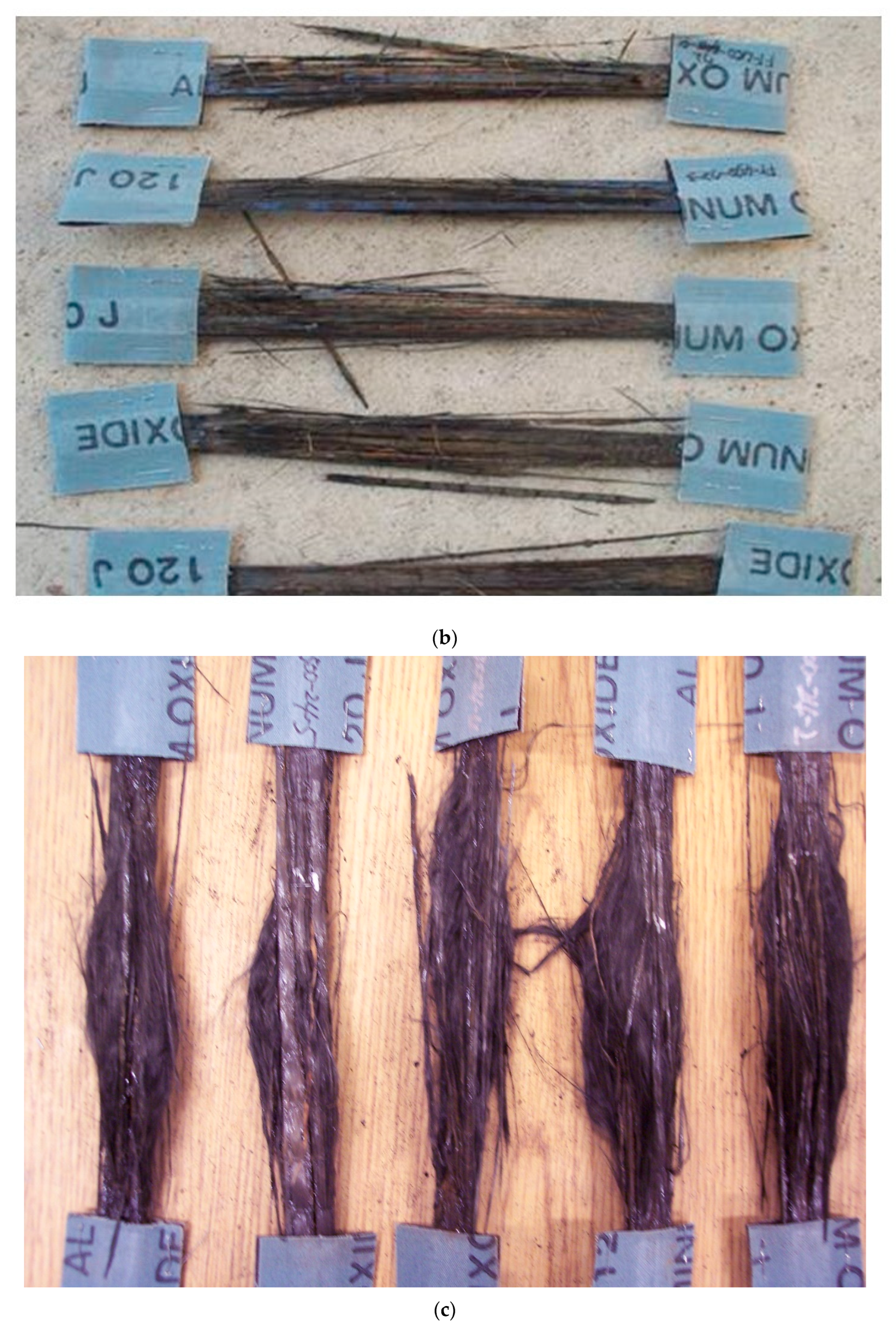

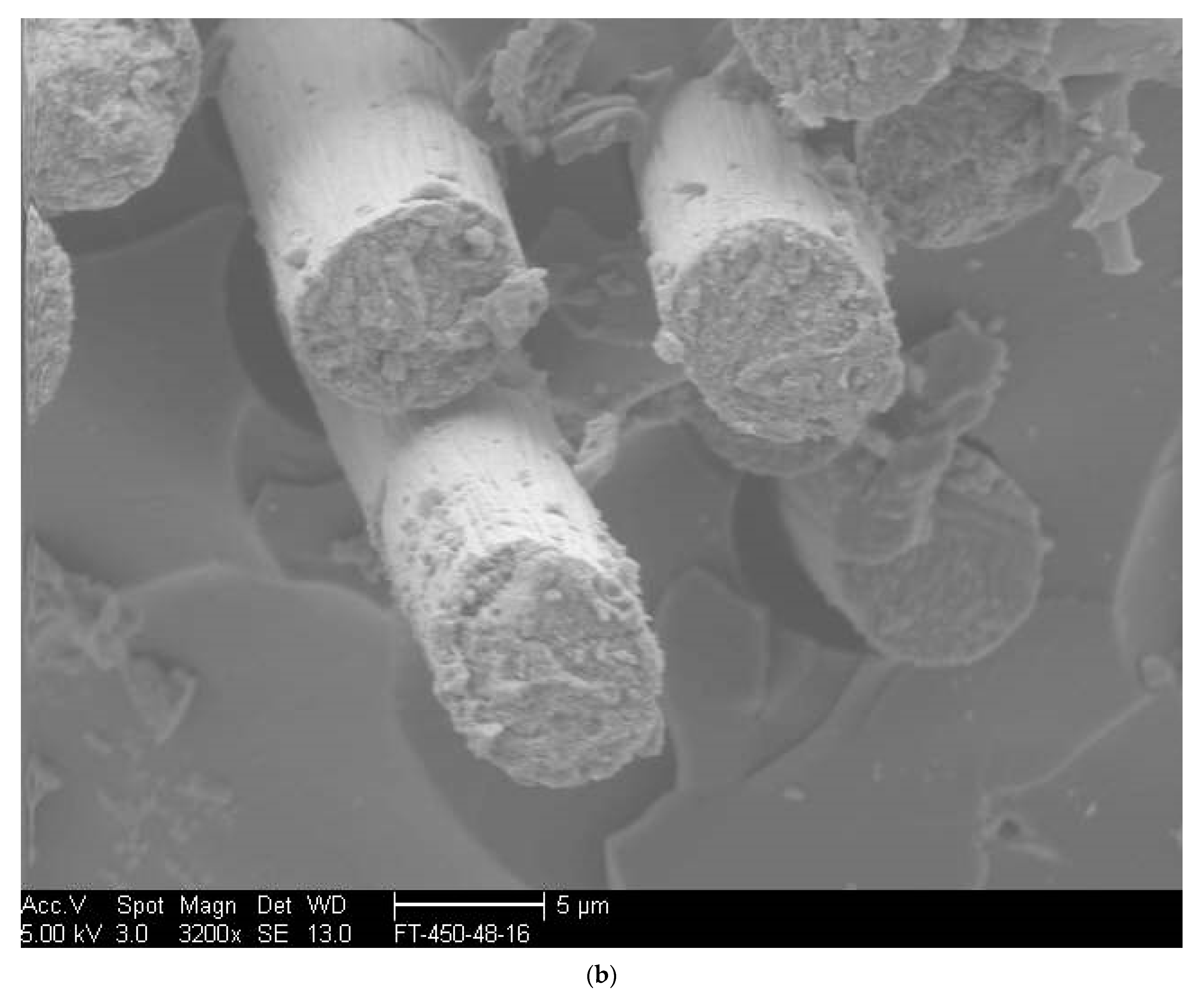
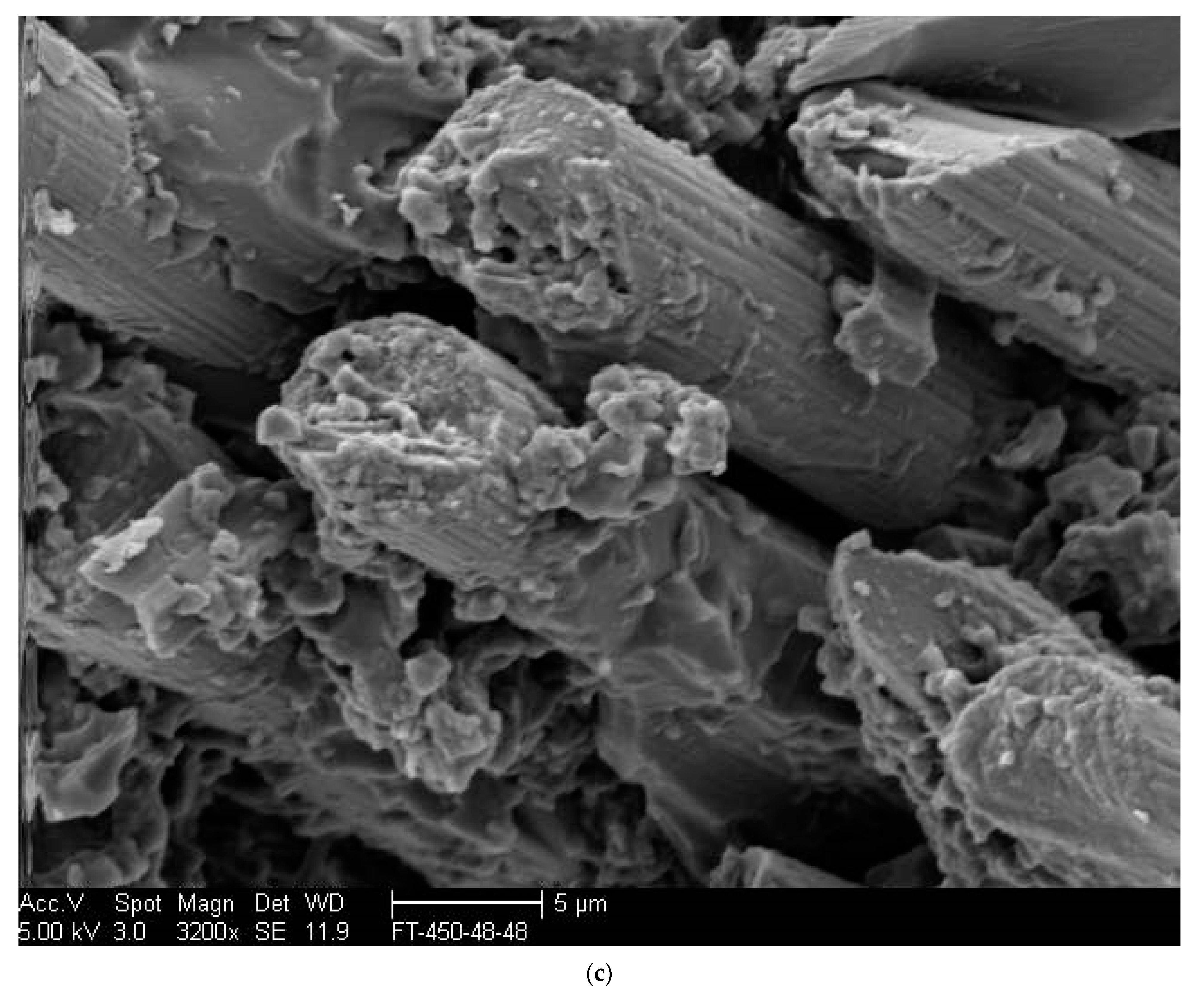
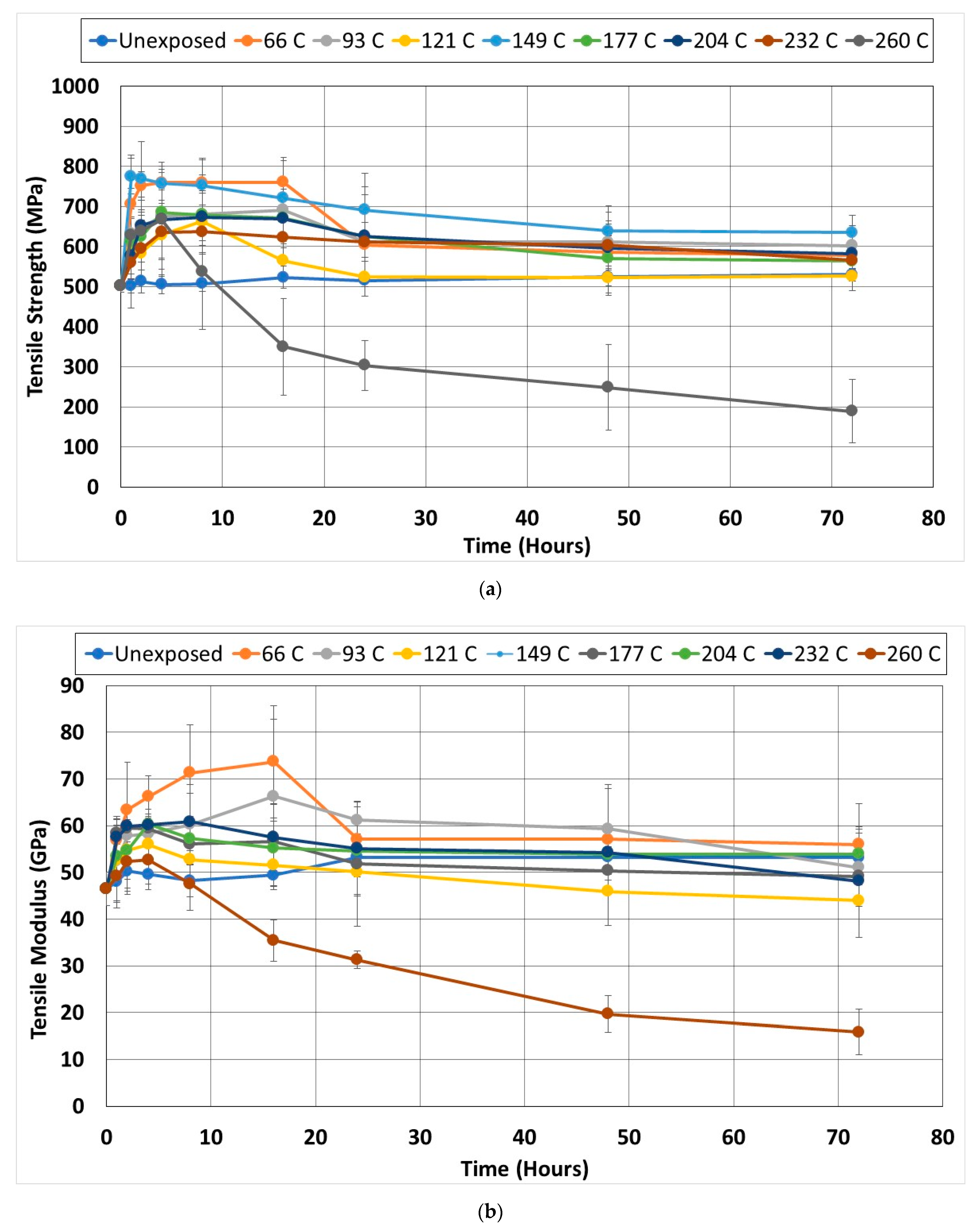



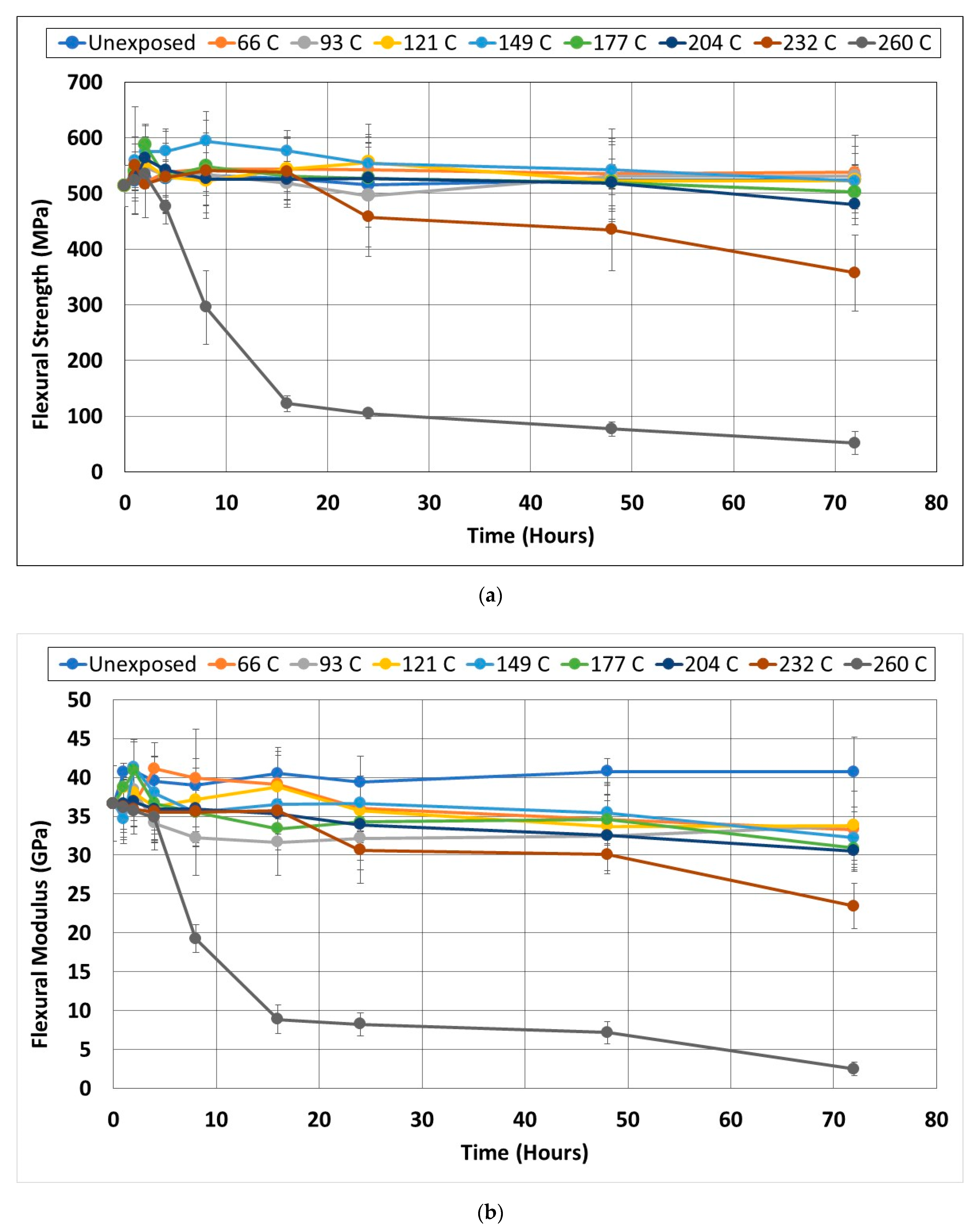
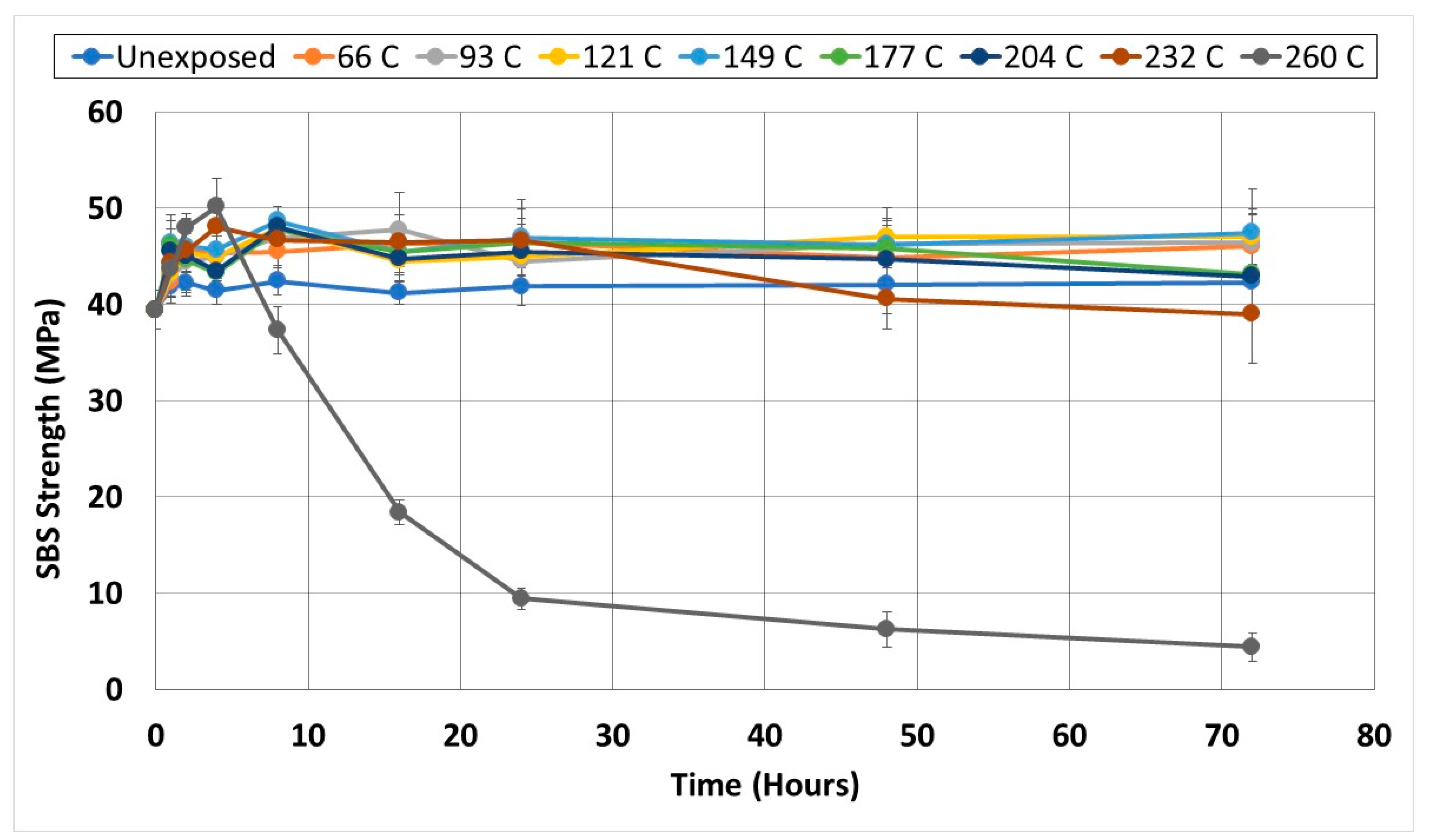



| Unexposed | 66 °C | 93 °C | 121 °C | 149 °C | 177 °C | 204 °C | 232 °C | 260 °C | |
|---|---|---|---|---|---|---|---|---|---|
| Tensile Strength | |||||||||
| Increase from Initial | 5.42% | 33.91% | 37.66% | 31.83% | 54.42% | 36.37% | 34.12% | 26.82% | 32.95% |
| Decrease from Peak | 0.00% | −23.85% | −12.89% | −20.52% | −18.14% | −17.67% | −13.53% | −11.25% | −71.76% |
| Tensile Modulus | |||||||||
| Increase from Initial | 14.61% | 58.59% | 42.70% | 20.53% | 33.34% | 27.94% | 29.88% | 30.91% | 13.24% |
| Decrease from Peak | 0.00% | −24.00% | −23.08% | −21.54% | −14.80% | −17.26% | −10.69% | −20.83% | −69.91% |
Publisher’s Note: MDPI stays neutral with regard to jurisdictional claims in published maps and institutional affiliations. |
© 2022 by the authors. Licensee MDPI, Basel, Switzerland. This article is an open access article distributed under the terms and conditions of the Creative Commons Attribution (CC BY) license (https://creativecommons.org/licenses/by/4.0/).
Share and Cite
Hong, S.; Karbhari, V.M. Effect of Thermal Exposure on Residual Properties of Wet Layup Carbon Fiber Reinforced Epoxy Composites. Polymers 2022, 14, 2957. https://doi.org/10.3390/polym14142957
Hong S, Karbhari VM. Effect of Thermal Exposure on Residual Properties of Wet Layup Carbon Fiber Reinforced Epoxy Composites. Polymers. 2022; 14(14):2957. https://doi.org/10.3390/polym14142957
Chicago/Turabian StyleHong, SoonKook, and Vistasp M. Karbhari. 2022. "Effect of Thermal Exposure on Residual Properties of Wet Layup Carbon Fiber Reinforced Epoxy Composites" Polymers 14, no. 14: 2957. https://doi.org/10.3390/polym14142957






